

Max Davies
How Audi, BMW, Honda, Mercedes-Benz, and Suzuki started out in Australia, and where they are now
15 Hours Ago
Kia’s fresh-faced plug-in SUV pushes the Korean brand into new territory. But is it worth a look in before a replacement arrives next year?

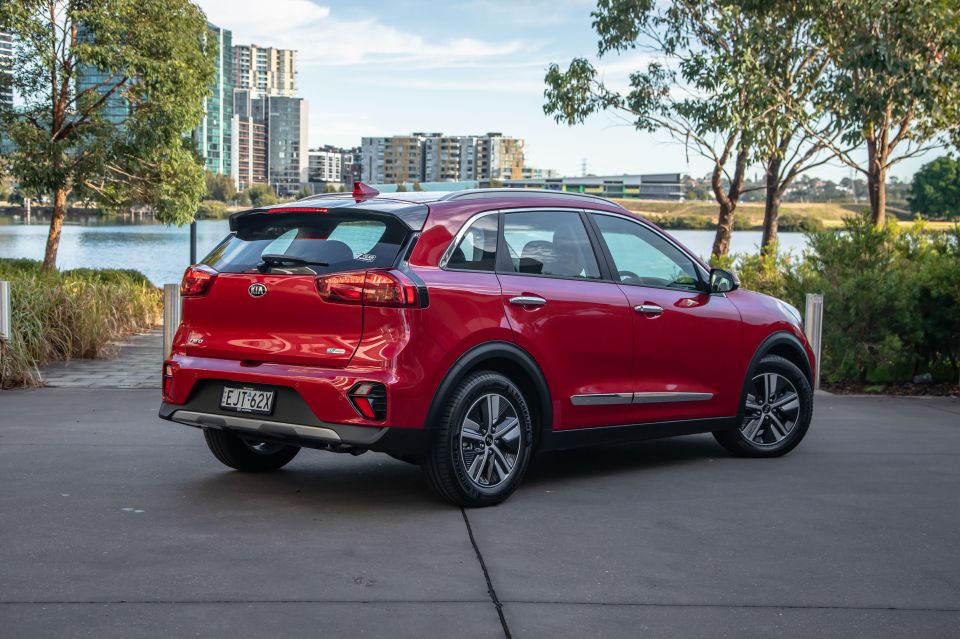

Journalist
New from
$46,590
excl. on-roads

Journalist
New from
$46,590
excl. on-roads


Journalist
New from
$46,590
excl. on-roads

Journalist
New from
$46,590
excl. on-roads
Quickly see how this car stacks up against its competition. Select any benchmark to see more details.
Where expert car reviews meet expert car buying – CarExpert gives you trusted advice, personalised service and real savings on your next new car.
The paint is still drying on Kia Australia’s new, three-prong foray into electrified motoring with the arrival of theNiro. The fresh-faced, small-stature SUV can be had in a choice of regular hybrid, full EV, or the format we have on test here, the plug-in hybrid (PHEV).
That’s not to say the Niro hasn’t been around a few blocks in other markets, in production since 2017 and already mature enough to have copped an MY20 face-lift. And as we’ve reported prior, the newcomer before you looks likely to be replaced by a restyled successor next year.
Things are moving quickly for what’s a crucially important range representing a new way forward for Kia. And before you take the Niro PHEV into serious purchasing consideration, it’s worth pondering whether or not plug-in is the right Niro to go for.

We also documented that Kia Australia forecasts a Niro sales split of 70 per cent hybrid – just look at Toyota, really – and 20 per cent for the full EV, a format many consider the broader destination of electrified motoring.
That leaves 10 per cent take-up for the plug-in stuff that, rightly or wrongly, gets viewed as something of a bridging technology to the future.
Today, though, we’re here to judge to the individual merit of real metal you can buy, specifically the base 2021 Kia Niro PHEV S.
How does it go, what does it do, and does it deliver on promises, particularly when it comes to all-crucial range and consumption benefit that, for the most part, customers still pay handsome premiums for.
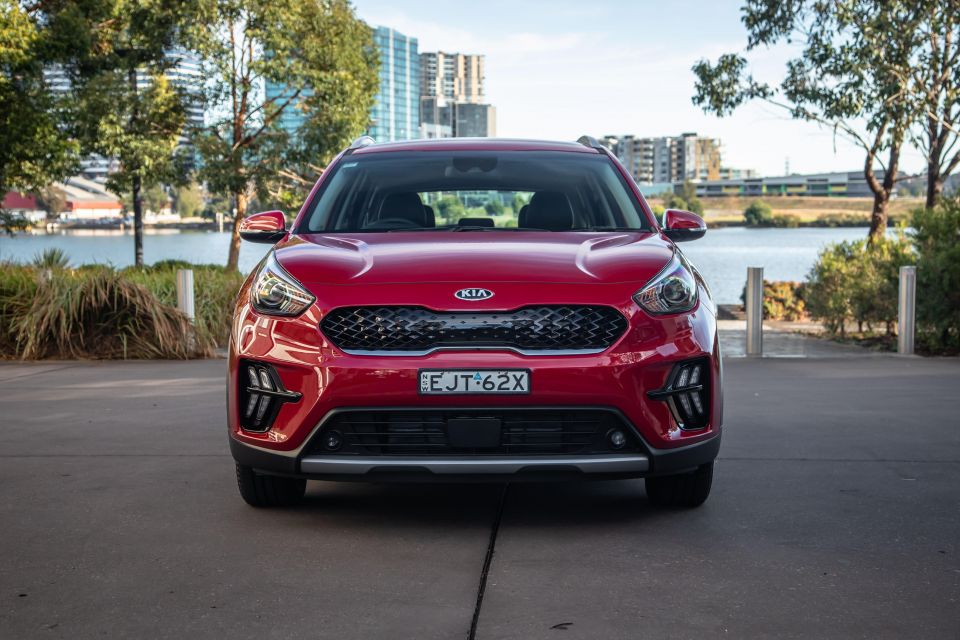
The PHEV version of the Niro in base S trim wants for $46,590 before on-road costs. That’s $6600 more than the Niro Hybrid S, $3900 more affordable than the high-spec PHEV Sport alternative, and a whopping $16,000 more affordable than the fully-electric Niro EV S.
Check out our pricing and spec story for a full range rundown. At the time of writing, Kia’s public website offers a cleanskin PHEV S for $49,990 drive-away.
Competitors? Depends on what you’re drawn to. There’s a somewhat larger Mitsubishi Eclipse Cross PHEV available from $46,490 in base spec, the technically related Hyundai Ioniq Premium PHEV for similar outlay ($46,950) if the electrified benefits and upmarket features outweigh your preference for a small SUV or crossover body style.
Real-world outlay depends on your charging preference: if you want to a full recharge from zero in “as little as 2 hours and 15 minutes” you’ll need to stump up extra for a wall box charger – Kia offers a 3.3kW device for around $2830 installed – that utilises the Niro’s Type 2 plug format. A portable trickle charger is standard fitment.
Metallic paint, such as the Runway Red seen here, wants for an extra $520.
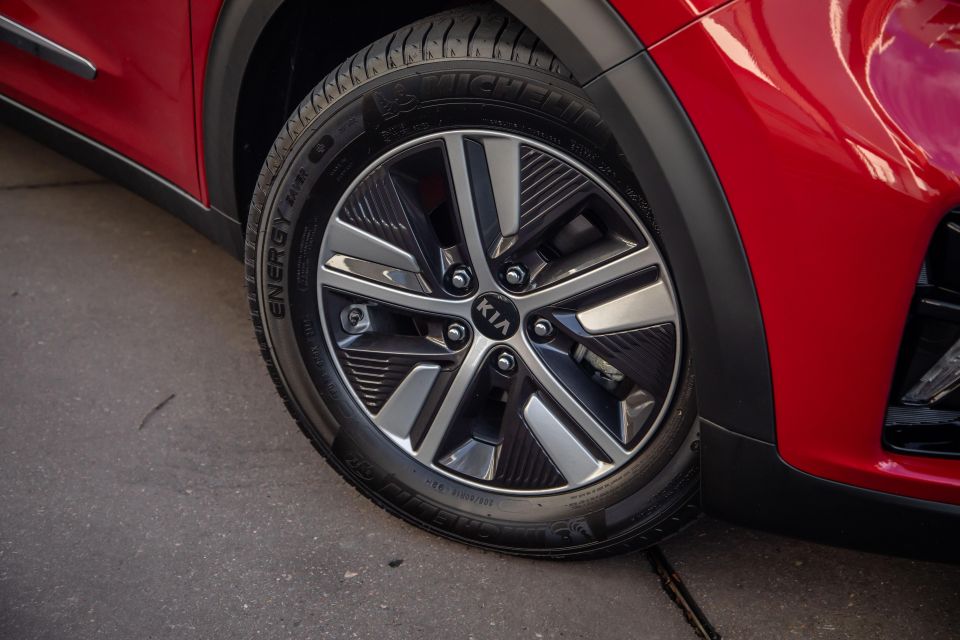
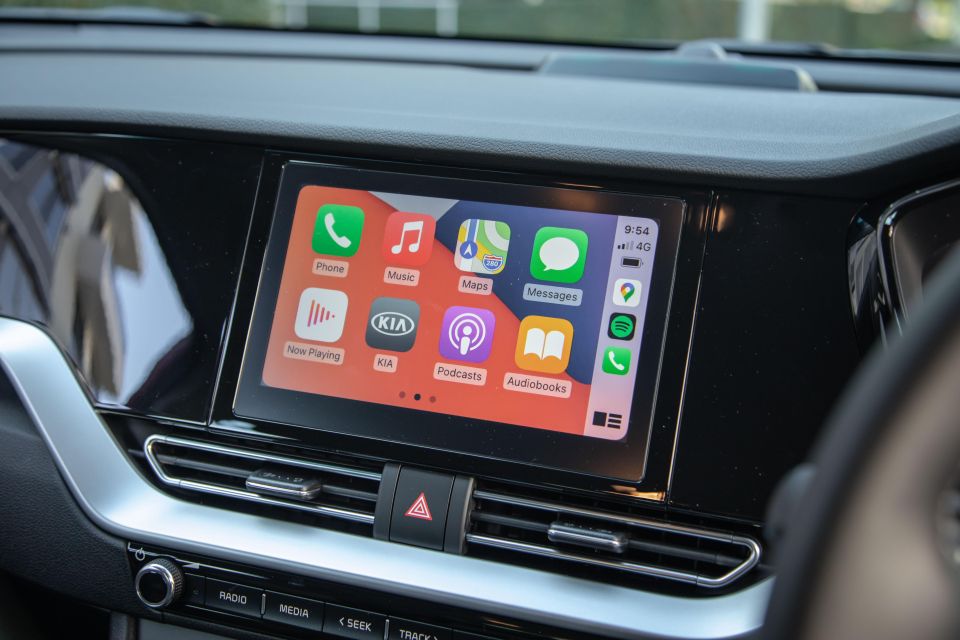
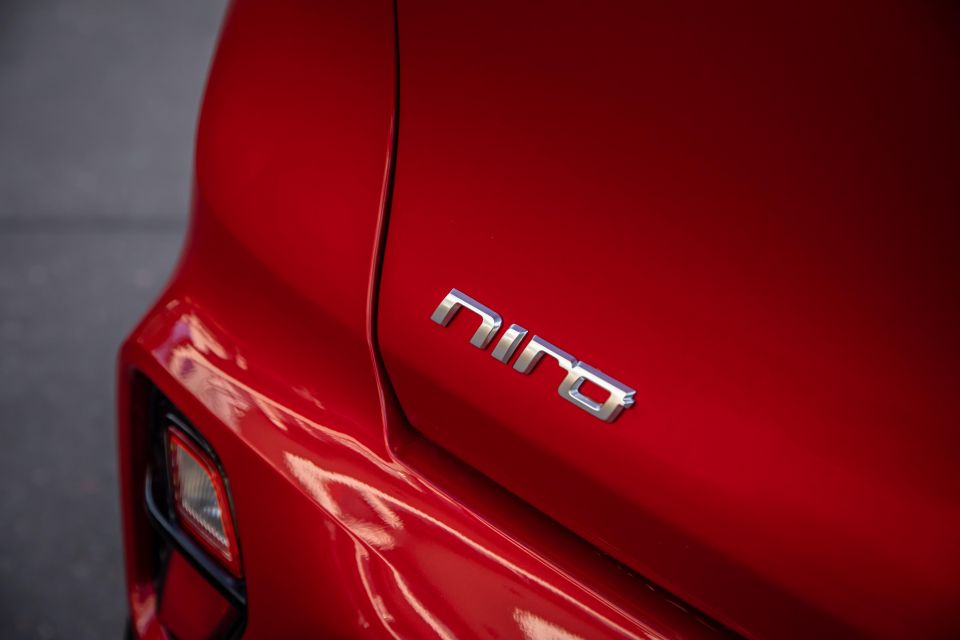
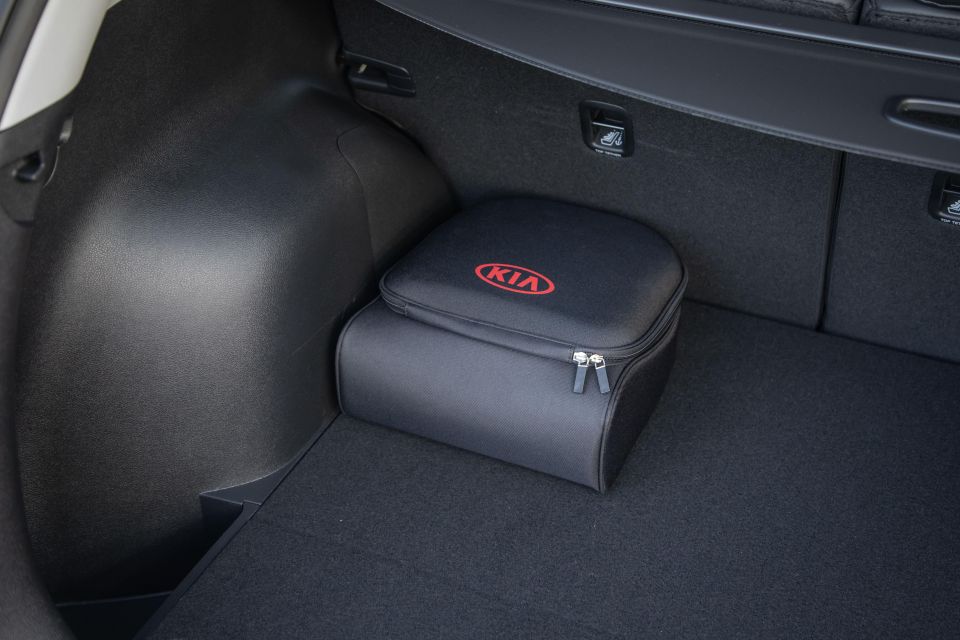
Buy your new car without the stress. It's fast, simple and completely free.

Great service from Travis and team, second time I have used this business would not hesitate to recommend them to anyone
Craig C.
Purchased a Ford Ranger in Sunshine Coast, QLD
CarExpert helped Craig save thousands on his Ford Ranger, now let us save you on your next new car.
Find a dealThe S grade focuses on a decent specification list that mostly covers essentials and adds a smattering of niceties.
Outside, the PHEV S fits dusk-sensing halogen projector-type headlights, LED daytime running lights, 16-inch alloy wheels with Michelin Energy Saver+ rubber, rain-sensing wipers, power-folding and heated mirrors, a reversing camera, parking sensors in the rear and a charging port in the front passenger-side fender.
Inside, the base grade gets a leather-wrapped wheel, cloth and partial leather trim, dual-zone climate control, a 4.2-inch TFT driver’s screen in an otherwise analogue array, USB-A and 12-volt device power and an 8.0-inch touchscreen infotainment system with DAB+ and six-speaker audio.
A strange quirk of the Korean’s current infotainment line-up is that this smaller unit offers wireless Apple CarPlay and Android Auto whereas the larger, higher-grade 10.25-inch sat-nav system in the Sport variants is wired connectivity only.
Active cruise control is a nice inclusion – tied to the all-speed AEB technology – though the key-barrel ignition does remind you that this version comes in at the ground level of the range.
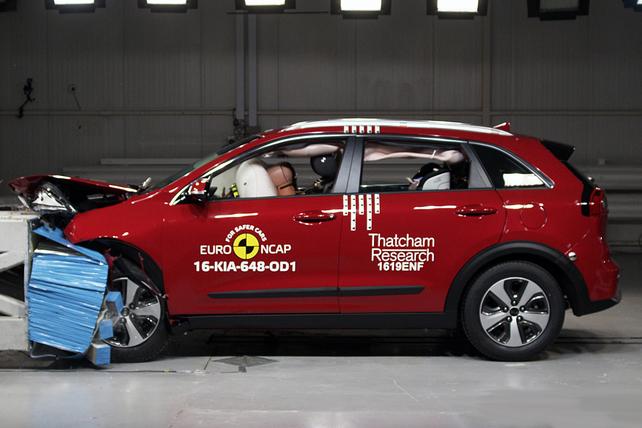
The hybrid and PHEV versions of the Niro from 2018 onwards get a full five-star ANCAP assessment conducted in 2016 by Euro NCAP. The EV version remains unrated.
Adult occupant protection is 91 per cent with child occupant protection at 80 per cent. Vulnerable road user scored 70 per cent while safety assist returned a commendable 81 per cent result.
Worth consideration is that the base S gets some but not all of the safety equipment fitted to the high-grade Sport. Range-wide inclusions are seven airbags, ISOFIX and top-tether points, all-speed AEB with pedestrian and cyclist detection, forward collision warning, leading vehicle departure warning, lane departure warning, as well as lane keeping and following (centring) assistance.
Omitted in S, if included in the higher-grade Sport, are blind-spot monitoring, rear-cross traffic alert, high-beam assist and auto dimming mirrors.

Lump the Niro into the ‘crossover’ camp if you like but it’s more a proper SUV – more a shrunken Sportage, say – than, well, the genre-straddling Stonic. That applies equally outside and in.
The cabin is reminiscent of its larger family-hauling sibling, especially with the deep dashtop, bluff fascia as well as the clear and logical arrangement of displays and controls. The mirror-like black gloss theme across the dash frontage, console garnish and door inserts works a treat, bringing with it smart presentation that cleverly masks what’s a fair amount of grey plastic surface area.
It boasts a neat tactile wheel, quality switchgear and controls and ornate driver’s instrumentation that integrates a stylised ‘charge/power’ meter and a 4.2-inch display that packs big visual punch for its modest form. Clear, easy to navigate, intuitive to use – these are all strong Kia hallmarks.
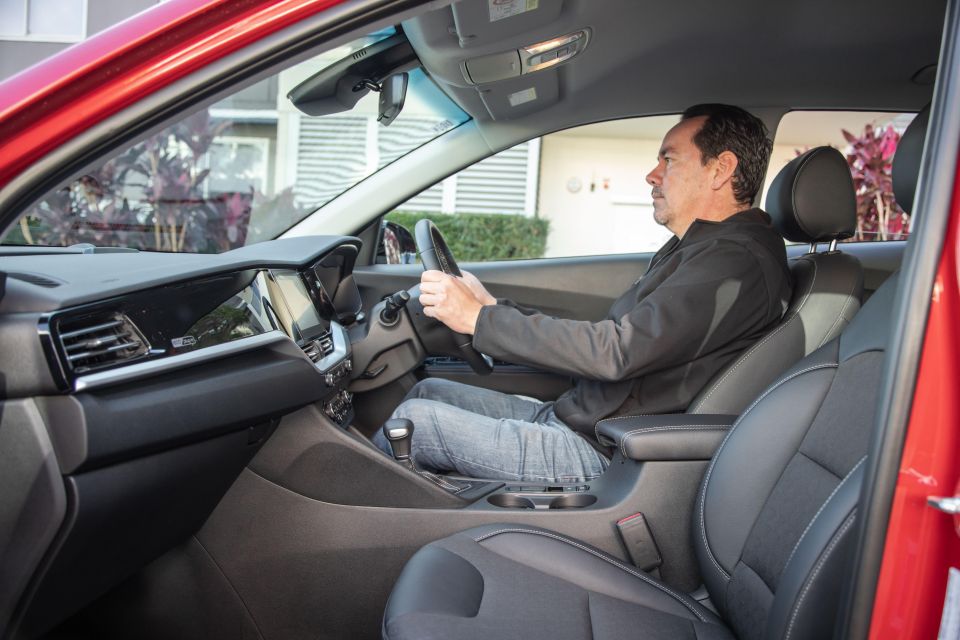
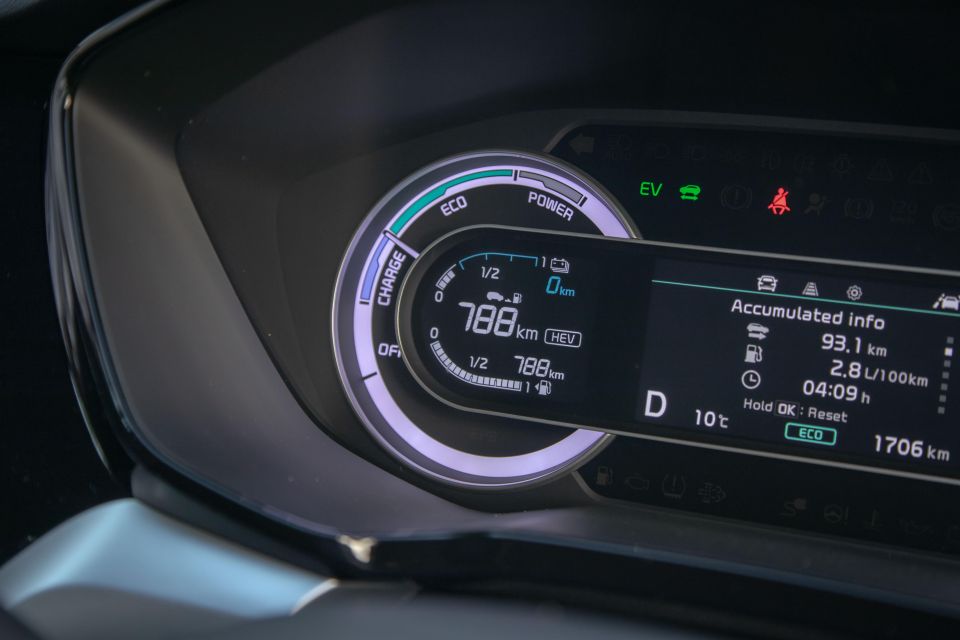
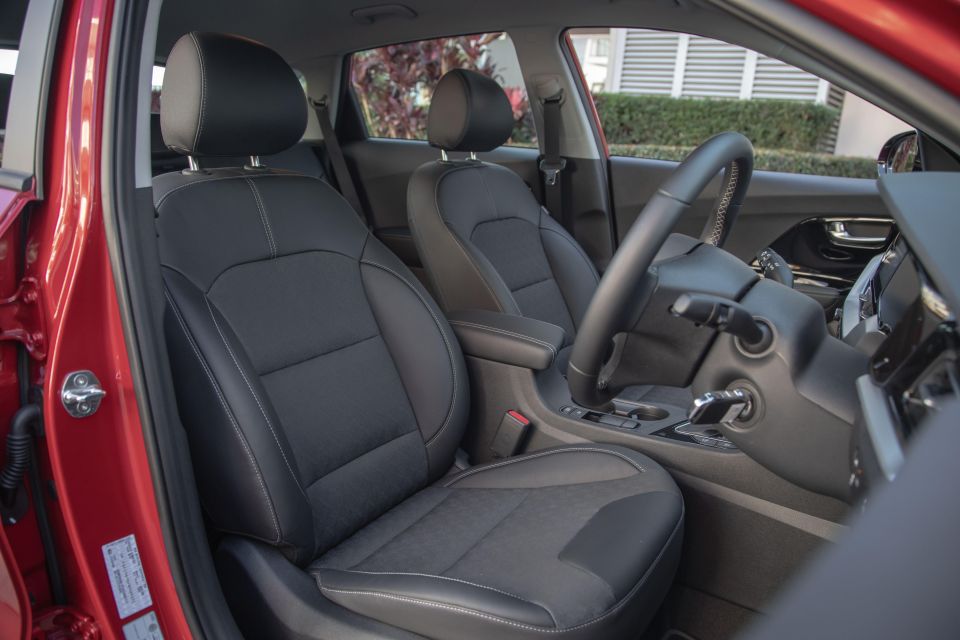
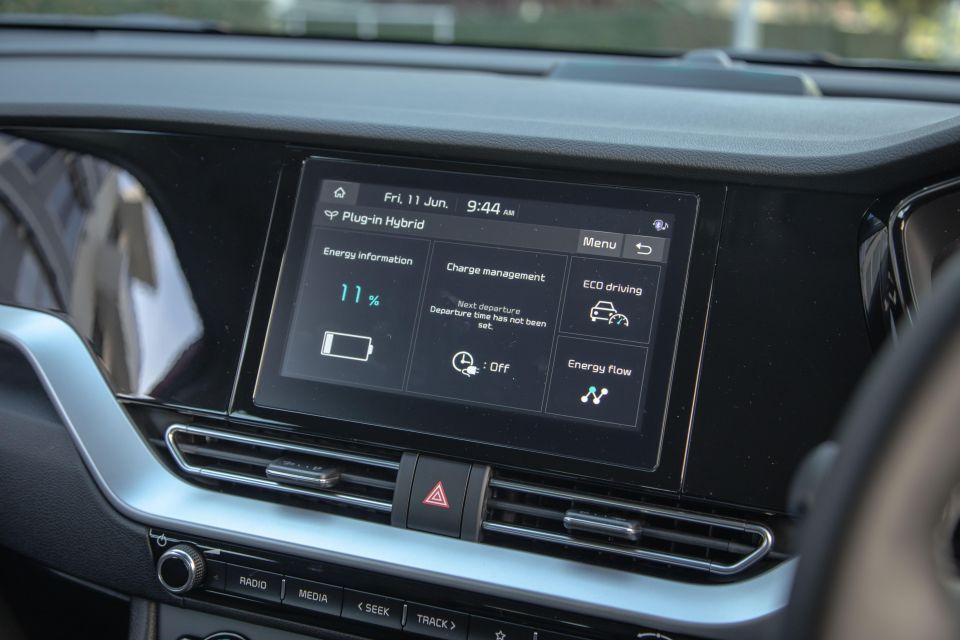
Further, the small-ish infotainment screen appears larger than it is, is mostly because it’s integrated so neatly into the dash fascia.
It does lack proprietary sat-nav, but smartphone mirroring does makes this largely superfluous save for rare situation of needing to input directions when out of phone range. The wireless CarPlay works fine, too, though streaming signal (such as Spotify) does drop out quite quickly once your phone signal is offline.
Eight-way electric driver’s seat adjustment is nice upmarket touch for what’s a surprisingly upmarket cabin. Even the trim, which I’ll describe as ‘hard wearing’, presents well, though some distinct waviness in the rear seatbacks around the fold-down armrest looks a bit scruffy.
The first row has a nice airy ambience of a larger vehicle while row two does a fine packaging job, offering huge headroom as well as decent knee and shoulder room, plus exceptional middle-position legroom due to the impressively flat floor. Again, it’s less a crossover and more proper SUV.
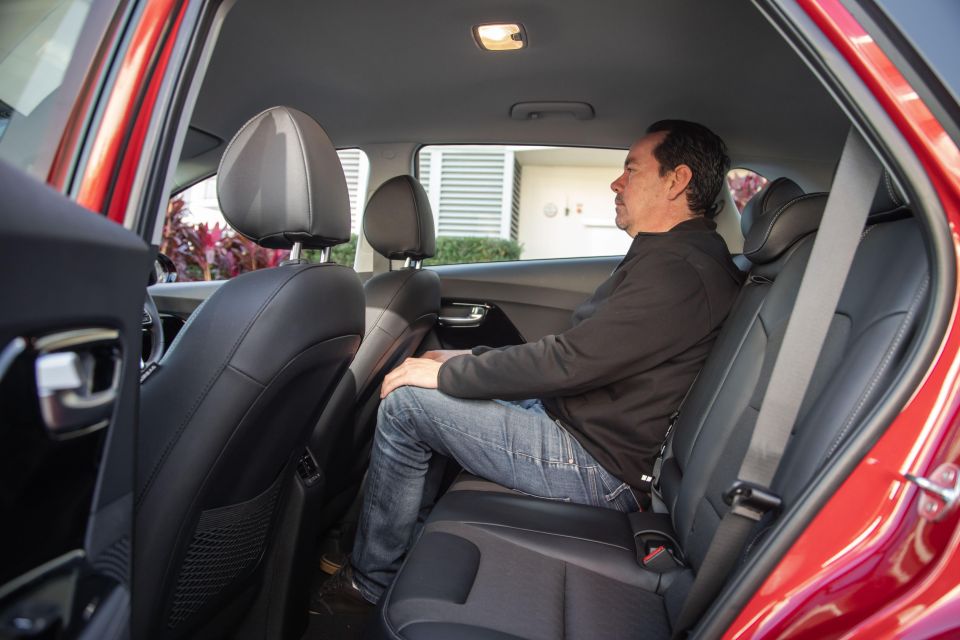
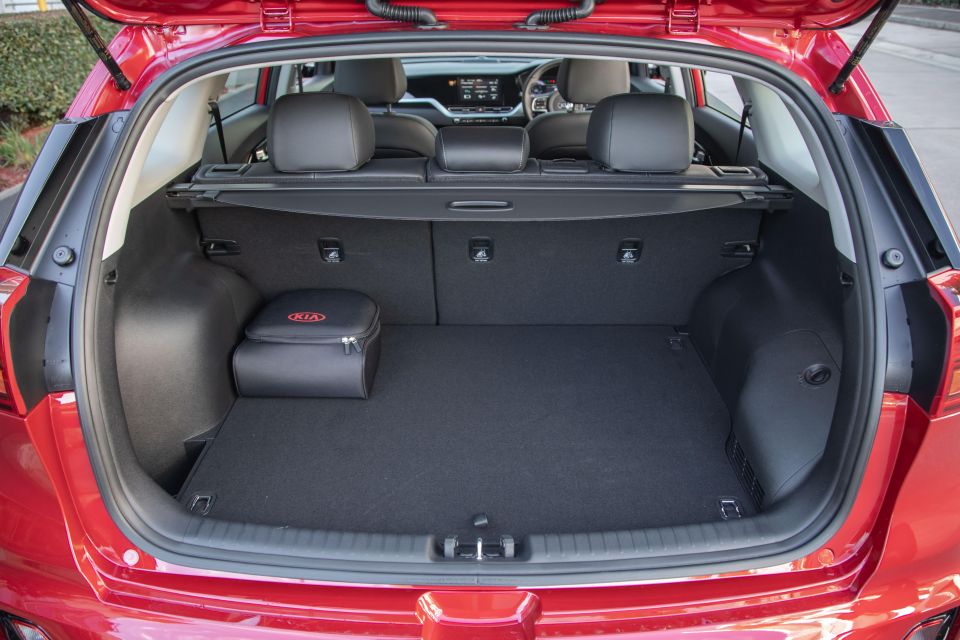
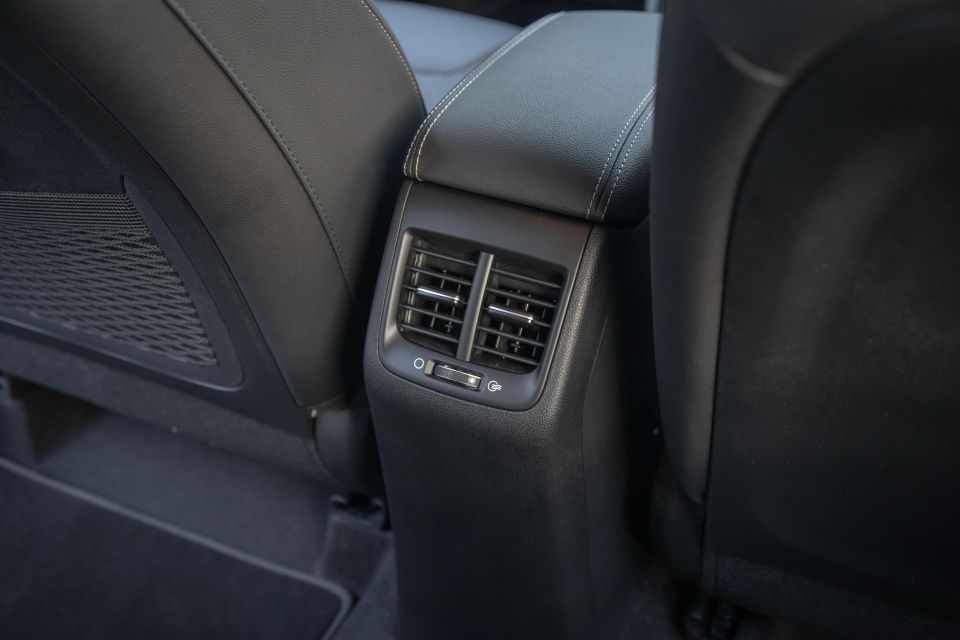
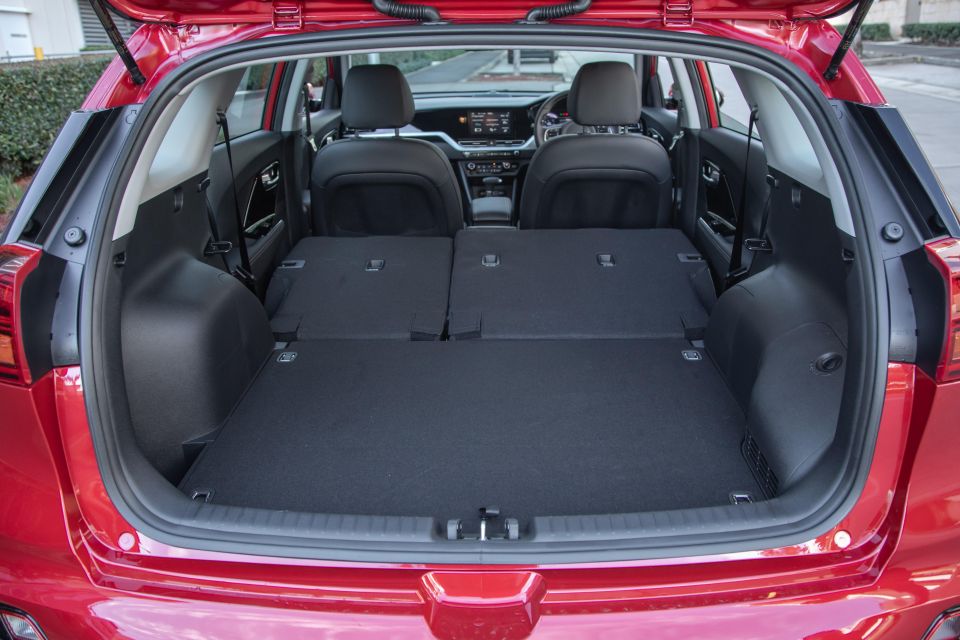
Row two gets air vents but no device power outlets, though the two front USB ports are supplemented with a third in the console bin if you want to run a single power cable to the rear occupants.
The rear seats stow in a 40:60-split configuration to convert the boot from fairly modest 324 litres – way down on hybrid and EV versions – to a handy 1322L converted to a two-seater.
The reason for the small boot is the sizeable battery pack under the floor, raising the floor height and leaving little room underneath it for anything other than the ‘tyre mobility (puncture) kit’. One minor frustration is that there’s nowhere other than the boot space to house the portable charging pack.
All in all, though, the Niro is a well packaged, welcoming and comfortable vessel that certainly feels more the grown up people mover than a trendy sports-hatch wannabe and all the better for it.
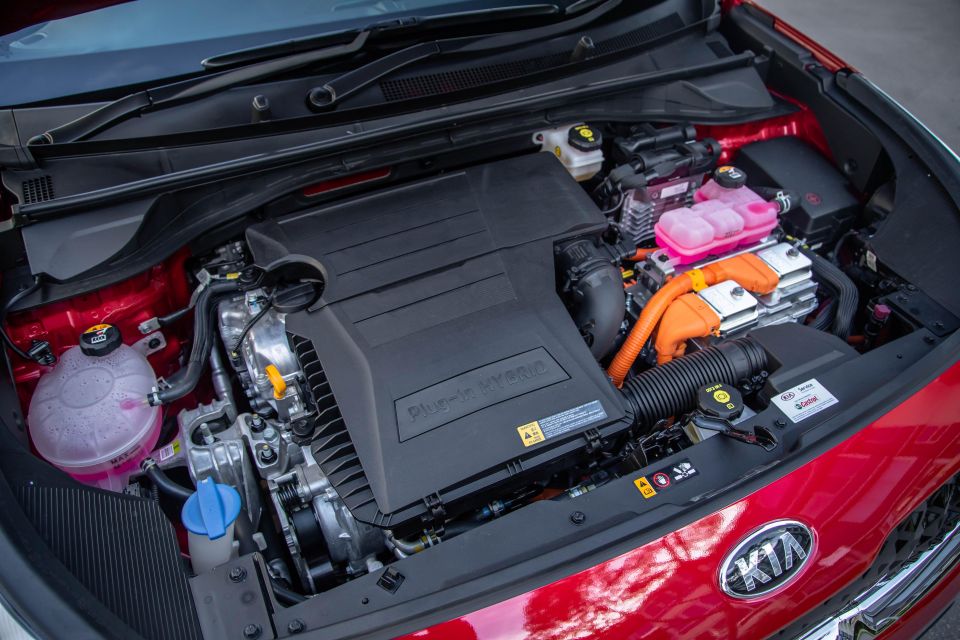
Internal combustion comes from a 1.6-litre naturally-aspirated petrol four good for 77kW at 5700rpm and 147Nm at 4000rpm. In isolation it’s no powerhouse.
It’s paired with an electric motor, transmission mounted and in parallel feed, that’s good for 44.5kW and 170Nm. The rest of the drivetrain comprises of a six-speed dual-clutch automatic gearbox and front-wheel drive.
Combined system output is rated at 104kW at 5700rpm and 265Nm at 4000rpm, which are exactly the advertised measures as the closed-circuit hybrid version despite offering a more powerful e-motor (44.5kW v 32kW). Either system is capable of EV Mode only speeds up to a 120km/h.
The PHEV advantage? It fits a bigger 8.9kWh lithium-ion battery with 360 volts and 24.7Ah capacity – the hybrid’s is just 1.56kWh. The upshot is an electric-only range advertised at 58 kilometres (NEDC), which is enough for many urbanite owners’ regular daily commuting range needs, or thereabouts.
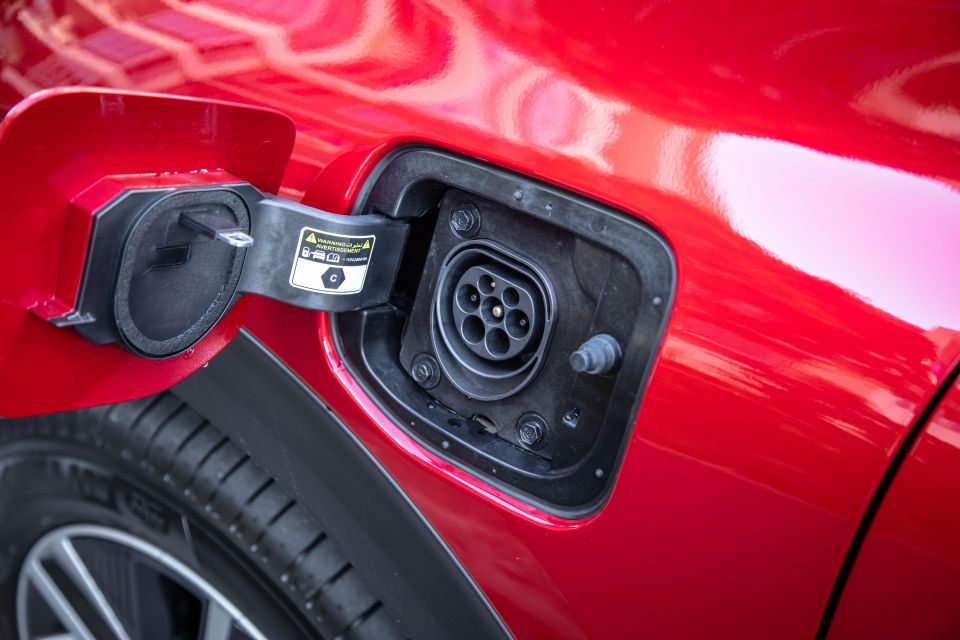
If there is a penalty it’s in kerb weight, the PHEV clocking in at 1564kg against the hybrid’s 1444kg.
Consumption? It’s advertised at the frugal 1.3L/100km on the combined cycle, compared to the Hybrid’s 3.8L/100km in its lightest S form.
Of course, real-world fuel consumption will vary substantially depending on range travelled and what balance of petrol and electric propulsion is used – and how – in the process.
There are two drive modes – Eco and Sport – and three levels of regenerative braking to choose from.
Suspension is strut front and multilink rear, tyres are 205mm in width, while towing is rated at 600kg unbraked and 1300kg braked.
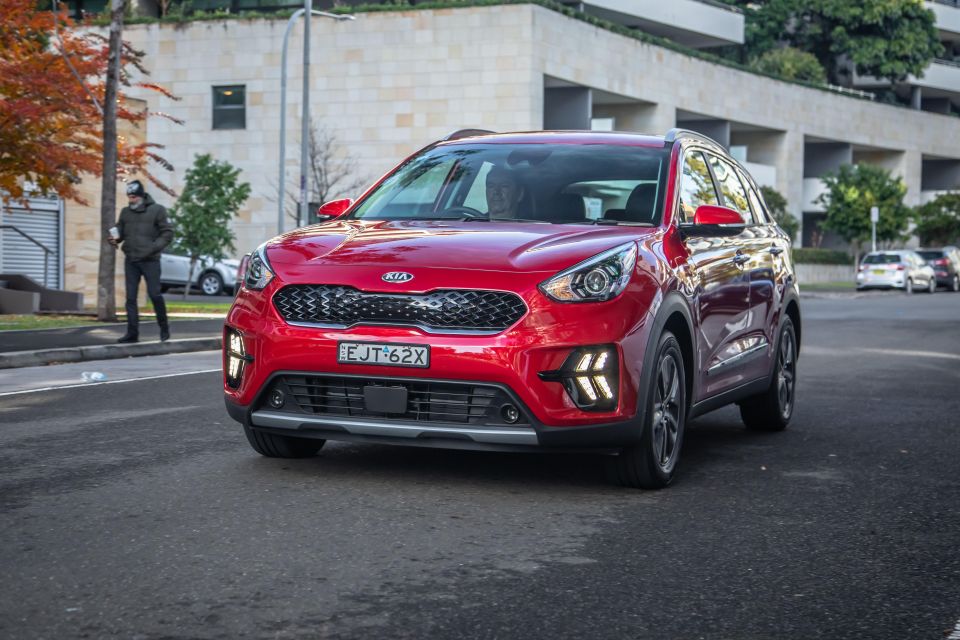
Let’s jump right into consumption. Fuel tank and battery pack brimmed, the Niro displays a total range of 870 kilometres – 816km attributed to internal combustion, 54km claimed for electric.
It defaults to HEV mode, aka Hybrid mode, and without any fiddling or pushing to EV-only drive it uses 17 kilometres of electric drive in the first 20km of distance (around 30 minutes drive time).
How much fuel it uses in HEV mode is debatable, at least evidenced by the conflict in the car’s computer. The ‘Accumulative Info’ display suggests 0.3L/100km, while a Drive Information display pegs it at 1.0L neat for the same journey distance and duration. Either way it’s damn good, if different.
Running the battery dry, unsurprisingly around the 54km mark, the Niro still displays a petrol only range of 811km. All as it should be then. Clearly the powertrain leverages electric drive as much as it can in HEV mode, chiming petrol in as it sees fit, hitting the targets to ought to confidently.
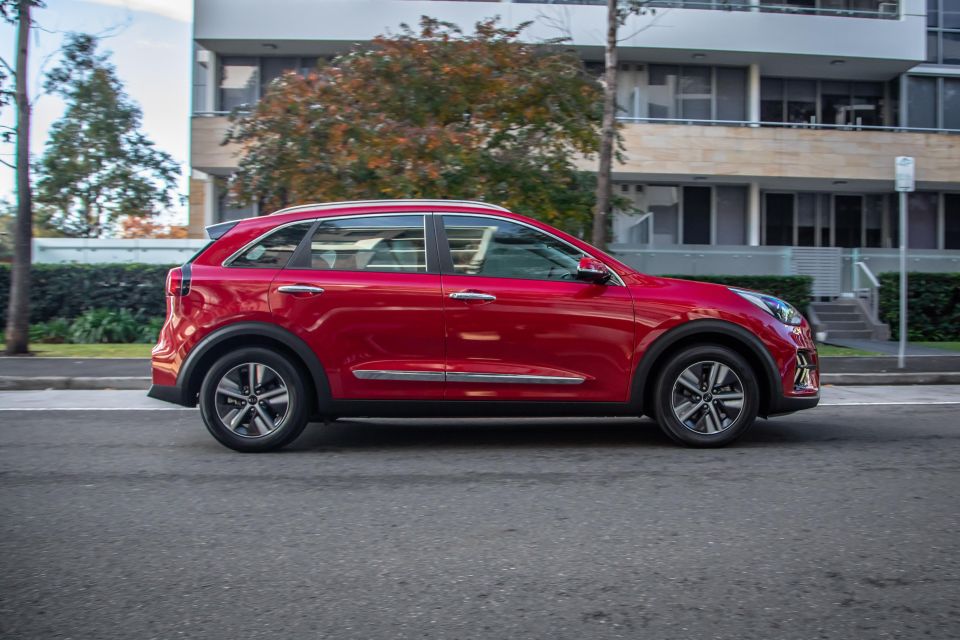
Eventually, after a genuine real-world 100 kilometres (and 3.5 hours of drive time) with no recharging in the interim, the Fuel Economy screen displays 2.3L/100km of consumption, almost wholly urban and without much in the way of highway cruising bar a handful of kilometres. A pretty damn good result.
The Niro drives its best with charge in its battery. The electric drive is instant, linear and torque-laden, while the petrol engine is somewhat noisy, less strident in response and needs revs to pluck its tractive best.
Leveraging as much EV propulsion as possible is where the Kia is at its happiest and most satisfying, though the drive experience becomes more mixed and inconsistent once you rely on regeneration to trickle some charge back into the lithium-ion battery pack.
And trickle it does. Even with a displayed zero charge, there always seems to be a little bit of EV drive in reserve for bumper-to-bumper driving, parking and silent idling. It also chimes in reverse to let you and bystanders know which way you’re headed.
On balance, it’s nicer to drive leisurely, which mostly harnesses the EV state, than when you dig in, where the petrol engine punches in and out of contributing forward motion in a loud and somewhat stressed manner.
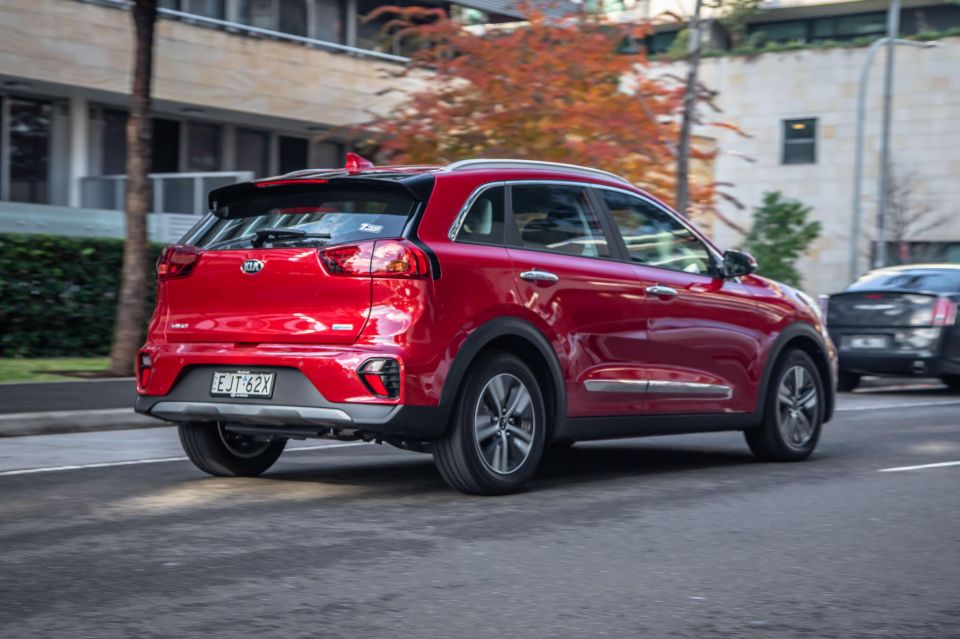
Indeed, the dual-clutch transmission maintains refined dignity with moderation, then presents a strange, almost CVT-like character once the two power units are called to arms and pass drive too and fro between themselves.
The rest of the package is quite solid on road. The Niro steers clearly and evenly, the brake system feels quite natural and there’s little in the way of regenerative histrionics during deceleration, and it handles quite sprightly and confidently with no noticeable detriment of lumping 117kg of battery pack around the rear axle line.
The ride quality errs on the firm side though not overly so, as it’s well damped, acceptably compliant and only gets frustrated by a concerted thump from the rear suspension on the backside of speed hump if you hit them with too much enthusiasm.
All in all a quality drive, if one prone to a bit of histrionics from the powertrain when you want to get a hasty move along.
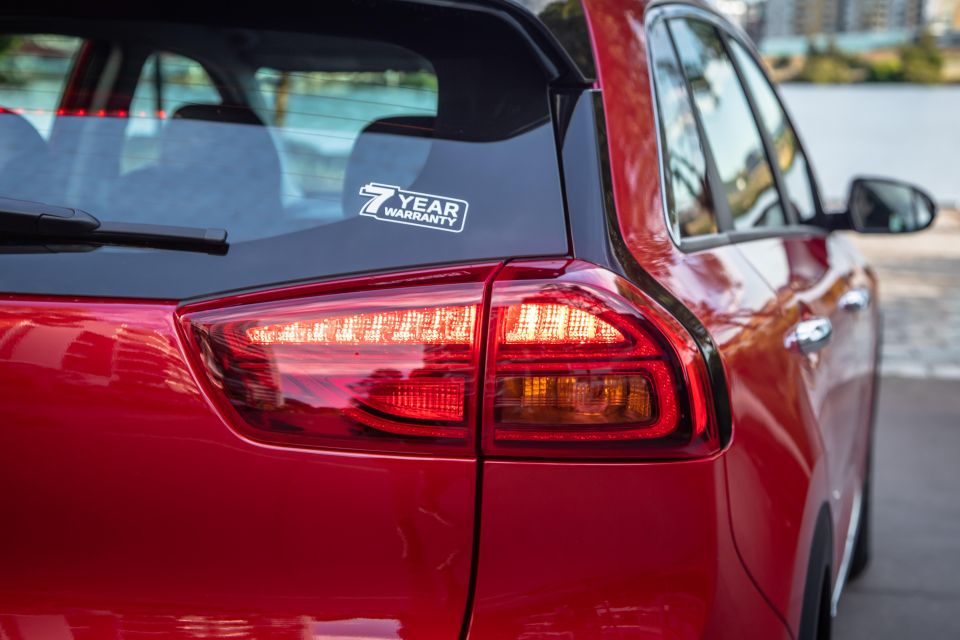
Where expert car reviews meet expert car buying – CarExpert gives you trusted advice, personalised service and real savings on your next new car.
The Niro is covered by Kia’s excellent seven-year/unlimited-kilometre warranty, with seven years of capped price servicing and roadside assistance.
That said, the warranty on the high-voltage battery and electric motor covered though to a 150,000km cap.
Servicing intervals are every 12 months or 15,000km, whichever comes first, with Kia offering capped-priced servicing through seven years (and 105,000km) for a total outlay of $3500.
Interval costs are $286, $487, $355, $871, $322, $620 and $559.
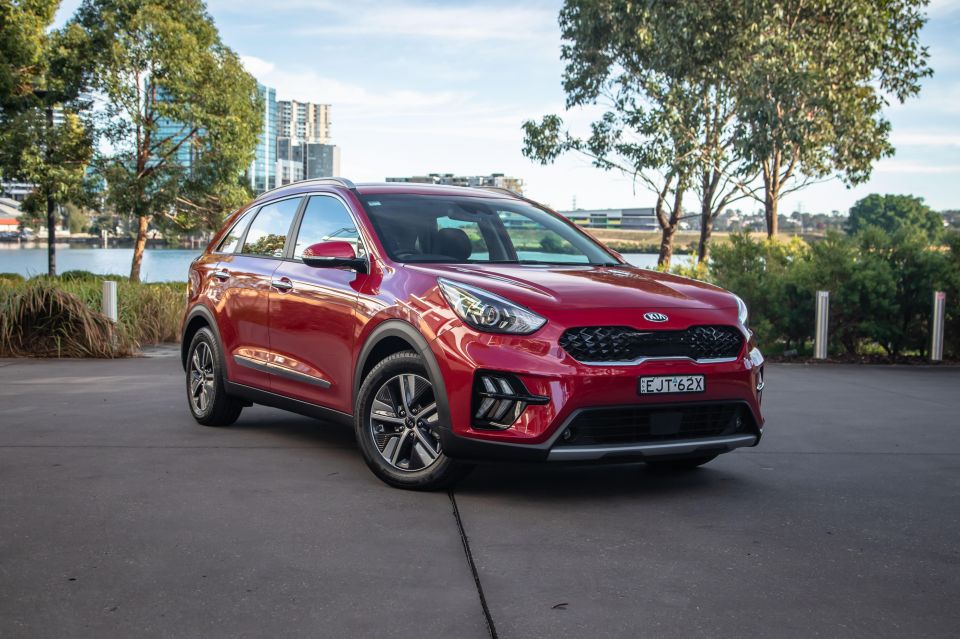
The base version of the Niro PHEV delivers what’s claimed on the box, though the Sport version appears to offer a fair improvement in equipment and safety credentials for what’s a relatively modest step up in price.
Alternatively, the hybrid Niro shouldn’t be ignored as a logical cross shop given it presents the same combined outputs in a lighter package for theoretically better performance, doesn’t require plugging in, is cheaper to buy and still offers some impressively frugal consumption (3.8L for the S, 4.4L for the Sport).
Again, despite its newness to the Aussie market, the replacement slated for 2022 is surely something to bear in mind before stumping up for this current version.
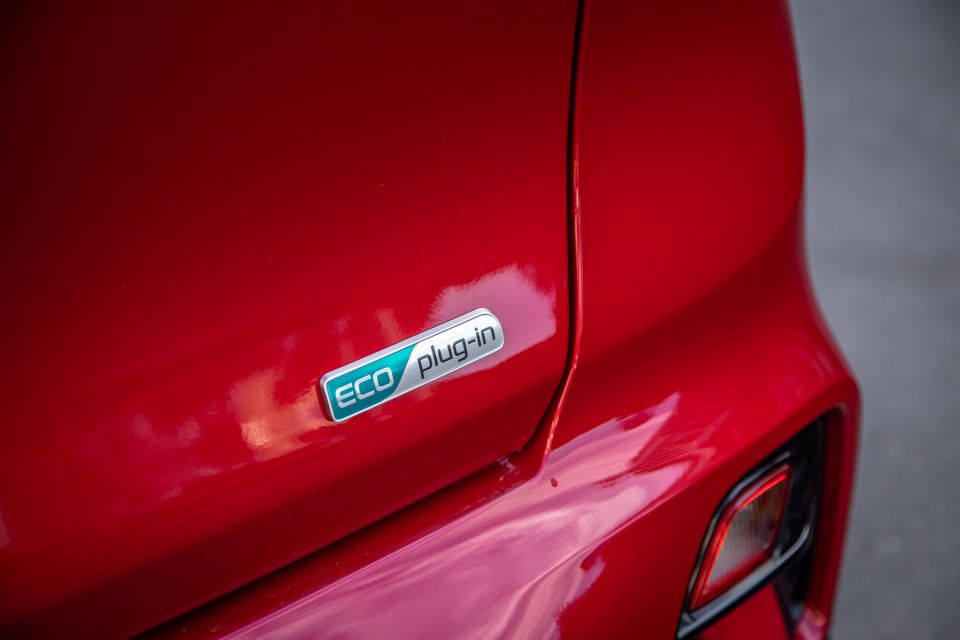
Click on the images for the full gallery
MORE: Everything Kia Niro
Where expert car reviews meet expert car buying – CarExpert gives you trusted advice, personalised service and real savings on your next new car.


Max Davies
15 Hours Ago


William Stopford
16 Hours Ago


Derek Fung
16 Hours Ago


Max Davies
23 Hours Ago


William Stopford
2 Days Ago


Ben Zachariah
2 Days Ago